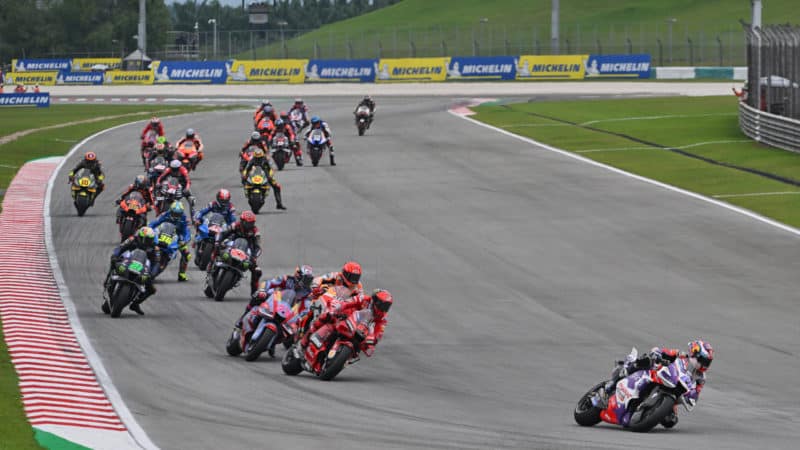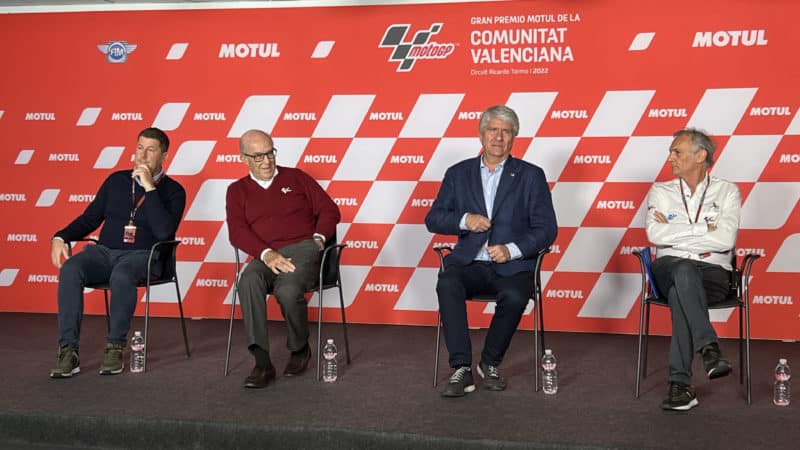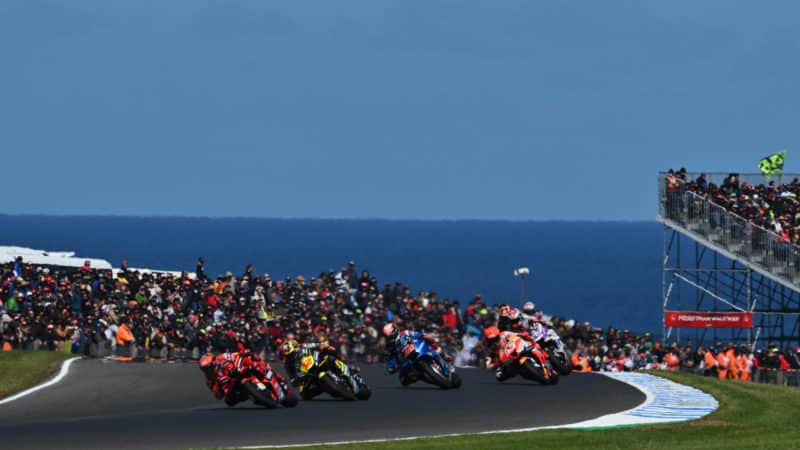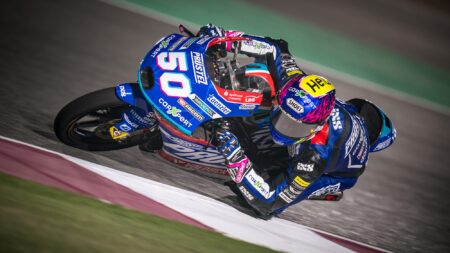In other words, top-level motorcycle racing finds itself in a very tricky position, with death rates rocketing, despite decades of tireless work by Dorna, IRTA, the FIM (Fédération Internationale de Motocyclisme) and others to improve circuit safety and riding gear. And neither super-safe circuits or super-trick riding gear can save anyone when they are struck by several hundred kilos of rider and machine travelling at high speed.
Therefore there’s not much that can be done about these accidents, except breaking up the packs, which means making the racing less close and therefore less exciting and most likely less profitable.
This is a huge problem, but there are other things going on within the upper echelons of MotoGP that are also very worrying, from safety and other points of view.
Today at Valencia, MotoGP announced the appointment of a new MotoGP safety officer, following the retirement of 67-year-old former MotoGP world champion Franco Uncini.

Jorge Martin leads last time out at Sepang
Michelin
The new safety officer is Tomé Alfonso Ezpeleta, who was in charge of the Losail and Aragon MotoGP venues and is now preparing the Kazakhstan Grand Prix.
If his name sounds familiar it’s because it is. This Ezpeleta is the nephew of Dorna CEO Carmelo Ezpeleta, whose son Carlos plays a leading role in MotoGP Race Direction and whose daughter Ana is director of Dorna’s talent promotion, which runs the numerous Road to MotoGP championships around the world.
And it goes further, while nephew Ezpeleta become MotoGP’s safety officer his partner Tamara Matko is set to become a permanent member of the FIM MotoGP Stewards Panel, presiding over rider conduct during race weekends and therefore handing out penalties and sanctions.
There is a word for this kind of operation: nepotism. And, funnily enough, the root of the word is the Italian word for nephew – nipote – which was used to describe the ancient habit of popes bestowing privileges on their ‘nephews’ (who, purely from a historical point of interest and certainly not applicable to the Ezpeletas, were usually their illegitimate sons).
Nepotism isn’t a healthy way to run a business. Never has been. Even more than 2000 years ago philosophers Aristotle and Confucius condemned the practice of giving unfair favouritism towards relatives.
The Ezpeleta family now bestrides MotoGP: from the commercial side of running the championship (which is Dorna’s primary job), to playing a major role in the actual running of the races and now to overseeing the safety of the riders and punishing riders.
To call these final parts of the Ezpeleta family’s rule of MotoGP a conflict of interest would be an understatement, because you cannot have the same family overseeing the commercial aspects of the sport, as well as safety and rider contact aspects, which is why they are both jobs awarded by the FIM (Fédération Internationale de Motocyclisme), not Dorna.
However, the fact the sport’s governing body gave nephew Ezpeleta his new job and looks set to give his partner a job, begs further questions regarding the uncomfortably close relationship between the various bodies that run MotoGP.
Motorcycling is a wonderful sport and its world championships should not be a family fiefdom.




